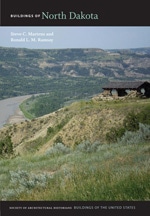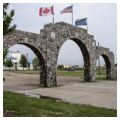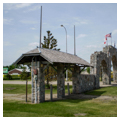Originally one of four state fairgrounds in North Dakota, the Grand Forks County Fairgrounds is an important setting for open-air recreation and cultural events. The WPA-funded rustic buildings and gateways were part of the federal work relief programs during the Great Depression. President Franklin Roosevelt’s visit to dedicate the fairgrounds was one of Grand Forks’ most publicized events of the 1930s. The Grand Forks County Fair remains an important annual event at the fairgrounds, although now the feature attractions have shifted away from horse racing and livestock events toward dirt track car racing. The grandstand, distinctive gateway of hand-cut granite fieldstones, and individual buildings are rustic, but at the same time reflect the Art Deco design competencies of Wells.
You are here
Grand Forks County Fairgrounds Buildings
If SAH Archipedia has been useful to you, please consider supporting it.
SAH Archipedia tells the story of the United States through its buildings, landscapes, and cities. This freely available resource empowers the public with authoritative knowledge that deepens their understanding and appreciation of the built environment. But the Society of Architectural Historians, which created SAH Archipedia with University of Virginia Press, needs your support to maintain the high-caliber research, writing, photography, cartography, editing, design, and programming that make SAH Archipedia a trusted online resource available to all who value the history of place, heritage tourism, and learning.


















